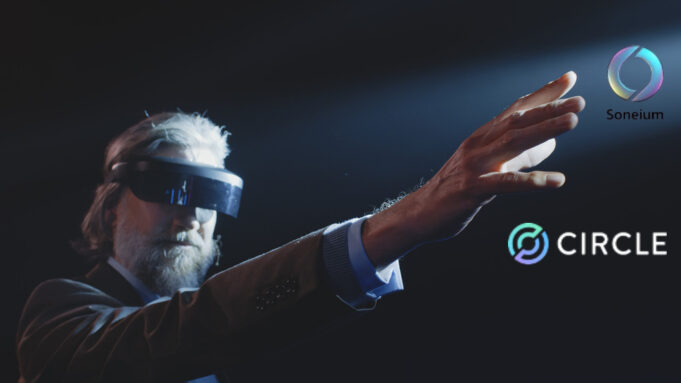Circle, the issuer of the popular USD Coin (USDC) stablecoin, recently announced a strategic partnership with Sony Block Solutions Labs, marking a significant milestone in its bid to expand the utility and market share of USDC. The collaboration aims to integrate Bridged USDC on Sony’s new Soneium blockchain, an Ethereum Layer-2 solution launched in August 2024. By positioning USDC as a key transaction token on Soneium, Circle is reinforcing its efforts to deepen USDC’s role in decentralized finance (DeFi) and the broader Web3 ecosystem.
This move is particularly notable in the context of Circle’s ongoing rivalry with stablecoin market leader Tether (USDT). USDT continues to dominate the space, boasting a market capitalization of $118.8 billion compared to USDC’s $35.7 billion. However, the Soneium integration is expected to enhance USDC’s market presence, especially in the DeFi sector. It can offer cheaper and faster transactions on the Layer-2 blockchain.
What Is Bridged USDC and Why Does It Matter?
Bridged USDC is an iteration of USDC that enables users to transfer the stablecoin across different blockchains. In this case, Bridged USDC will be deployed on Soneium, Sony’s Ethereum-compatible Layer-2 blockchain, while remaining fully backed by reserves on its original chain. This bridging mechanism allows the token to operate efficiently on different networks without compromising its peg to the U.S. dollar.
For developers and users, this means access to scalable and cost-effective digital dollar transactions. Soneium, designed to address some of Ethereum’s scalability issues, will enable developers to create decentralized applications (dApps) with lower transaction fees and enhanced throughput. The Ethereum Layer-2 ecosystem is rapidly becoming a popular solution for congestion and high fees on the Ethereum mainnet. Circle’s decision to bridge USDC to Soneium is a logical extension of its multi-chain strategy.
Expanding USDC’s Reach in a Competitive Stablecoin Market
The stablecoin market has been highly competitive, with Circle facing mounting pressure from other prominent players. Tether’s USDT has long been the market leader, but the entry of PayPal’s PYUSD in 2023 has added a new dynamic. PayPal’s move into the stablecoin arena, coupled with Tether’s dominance, has made it crucial for Circle to innovate. It must expand its ecosystem to remain competitive.
By integrating USDC into Sony’s Soneium blockchain, Circle is aligning itself with a major tech player. Sony is a company known for its influence in entertainment, gaming, and hardware development. Soneium, developed in partnership with Startale Labs, positions itself as a blockchain network emphasizing interoperability and decentralized finance. The network has already formed alliances with leading blockchain projects such as Astar, Chainlink, and Optimism. It clearly wants to position itself as a key player in the Layer-2 space.
A Strategic Move for DeFi and Web3 Adoption
For Circle, integrating USDC into a burgeoning Ethereum Layer-2 blockchain like Soneium strengthens its position in the rapidly evolving DeFi and Web3 sectors. DeFi applications rely heavily on stablecoins like USDC to facilitate lending, borrowing, and trading activities. Hence, Circle’s push into Layer-2 solutions like Soneium enables these processes to occur at a lower cost, with increased speed.
Furthermore, the partnership reflects the broader trend of Layer-2 blockchain adoption. Ethereum’s mainnet is highly secure and decentralized. However, it has faced criticism for its high fees and slower transaction times during periods of network congestion. Layer-2 solutions like Soneium alleviate these issues. They process transactions off the Ethereum main chain, while still benefiting from its security guarantees.
In this context, Circle’s collaboration with Sony also has significant implications for the Web3 creator economy. Soneium aims to attract creators and developers in gaming, media, and other digital content areas. The use of USDC as a stable, widely accepted medium of exchange will play a crucial role in enabling new forms of monetization and innovation.
Circle’s partnership with Sony to integrate USDC on the Soneium blockchain is a bold move in the highly competitive stablecoin landscape. With this collaboration, Circle strengthens its foothold in the DeFi sector and enhances its offering for developers and creators within the Web3 ecosystem. As the stablecoin market becomes more crowded – with players like Tether and PayPal increasing their influence – Circle’s focus on Layer-2 solutions and multi-chain compatibility could be key to maintaining and growing its market share.
While it remains to be seen whether this partnership will shift the balance of power in the stablecoin arena, it certainly underscores Circle’s ambitions to be a leader in the digital finance space.
Readers’ frequently asked questions
How does Soneium’s Layer-2 infrastructure compare to other Layer-2 solutions, and what unique advantages does it bring to USDC transactions?
Soneium, as an Ethereum Layer-2 solution, offers many of the same advantages seen in established Layer-2 protocols like Optimism, Arbitrum, and Polygon. These platforms are all designed to offload transaction processing from Ethereum’s mainnet to improve scalability and reduce costs. However, what differentiates Soneium is its direct association with Sony, a global technology and entertainment giant. It is positioning itself as a blockchain optimized for industries like gaming, entertainment, and the creative economy. This focus could create more tailored applications of Bridged USDC, such as in digital content monetization and gaming rewards, where stable, low-cost transactions are essential.
Soneium also has a broader ecosystem vision that includes partnerships with key blockchain infrastructure players like Chainlink and Astar. This can make it potentially more interoperable across various chains and industries compared to other Layer-2 networks. For Circle, this could mean that USDC on Soneium has more specialized use cases and higher adoption rates among creators and media producers.
What risks does Circle face in relying on a relatively new blockchain like Soneium for expanding USDC?
While integrating USDC on Soneium opens new opportunities for Circle, it also carries risks. Soneium is a relatively new blockchain, launched in August 2024. It has yet to prove itself in terms of network security, scalability under high transaction volumes, and long-term viability. If Soneium were to encounter technical issues or fail to attract enough users and developers, the adoption of USDC on this network could be limited.
Moreover, Tether (USDT) still dominates the stablecoin market with over $118 billion in market capitalization, compared to USDC’s roughly $35 billion. Although Circle’s collaboration with Sony is strategically significant, Tether has a first-mover advantage, especially in DeFi and crypto trading. Circle’s reliance on Soneium may not be enough to displace USDT without robust demand for decentralized content platforms and Web3 tools. In the competitive stablecoin landscape, Circle must continue expanding to other chains. It must also maintain a high level of liquidity and utility to challenge USDT’s dominance.
Will this partnership with Sony have broader implications for USDC’s regulatory positioning in global markets?
Circle’s collaboration with a globally recognized corporation like Sony could bolster USDC’s standing, particularly in regulatory conversations. Governments and regulators worldwide have been scrutinizing stablecoins. They are concerned about transparency, reserve backing, and potential systemic risks in financial markets. A partnership with Sony, a highly regulated multinational, could offer Circle more legitimacy. It signals that USDC is used in more traditional, highly regulated sectors like entertainment and media rather than just in the more volatile DeFi space.
This might also help Circle in discussions with regulators about the stability and security of Bridged USDC. It would showcase its broad utility beyond speculative trading or cryptocurrency exchanges. Circle has already made strides in aligning with regulatory frameworks. This high-profile partnership may provide more leverage in regions where stablecoins face regulatory hurdles.
What Is In It For You? Action Items You Might Want to Consider
Position yourself for growth in the Layer-2 ecosystem
With Circle integrating USDC into Sony’s Soneium Layer-2 blockchain, now might be a good time to explore opportunities within Ethereum Layer-2 solutions. Platforms like Optimism, Arbitrum, and Soneium offer lower transaction fees and scalability improvements. This could boost the efficiency of your trades and DeFi operations. Keep an eye on USDC liquidity in these networks and consider positioning some of your assets in Layer-2 protocols to benefit from cheaper, faster trades.
Diversify your stablecoin portfolio
USDC’s new integration with Soneium is a strategic move to challenge Tether’s dominance. While USDT remains the market leader, having exposure to USDC, especially as it expands its use in decentralized finance (DeFi), could provide a more secure alternative for your trading needs. Evaluate whether you want to shift part of your stablecoin holdings into USDC, particularly if you’re involved in dApps or Layer-2 trading, where the token might soon be more widely adopted.
Monitor adoption of Soneium and Layer-2 projects for early opportunities
As Soneium’s ecosystem grows with high-profile partnerships like Circle, consider tracking its developments closely. Early adoption of new Layer-2 technologies often presents lucrative trading and investment opportunities. If Soneium gains traction, the value of assets and tokens in its ecosystem could rise. Look for signs of increased user activity, developer interest, and partnerships to determine the right moment to enter positions in projects built on Soneium or using Bridged USDC.










